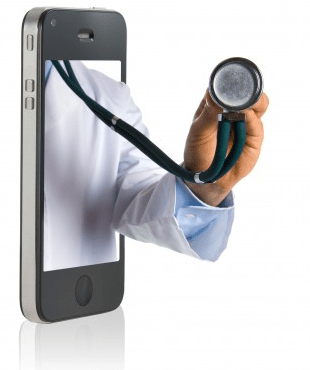Last month, we took a look at some of the ways mobile technology is transforming the health industry. While there are many factors affecting this transformation, like artificial intelligence, big data, 3-D printing, social health networks, and remote communications, to name a few (check out Josh’s post on this here), unsurprisingly, change is coming at the hands of the growing ubiquity of cell phones, smartphones, and mobile devices.
Early last year, PEW Research was already reporting that 17 percent of mobile phone users were using their devices to look up health and medical information, and Juniper recently estimated that 44 million health apps were downloaded in 2011.
In turn, the amount and availability of health data is exploding in tandem with the growing adoption of health and medical apps and devices, thanks to the increasingly wearable and user-friendly devices that use smart sensors to capture and transmit a variety biometric data. Electronic medical records (EMRs) are being made available on mobile devices — even Kaiser Permanente is getting in on the digital revolution.
The mHealth industry is growing fast. According to Research2guidance‘s calculations, the size of the mHealth app market will nearly double in 2012 to $1.3 billion, up from $718 million in 2011. (I discussed the volatility of these statistics, the still-changing definitions of mHealth and mHealth technology, and conflicting reporting on these numbers here.)
While these numbers can sometimes be misleading, the mHealth sector is not only going to continue to expand, its profitability is going to skyrocket. This is because, in juxtaposition with the $7 trillion global healthcare market, the mHealth market remains incipient. Healthcare companies, startups, and beyond are just beginning to tap into the potential of mobile technology, both in terms of quantified self devices, which bring healthcare in the clinic home, the mobility of data and communication channels. Companies are beginning to spend more and more on research and development, the big kahunas of the medical world are starting to release real, functional mobile apps, and consumer-facing medical devices are just starting to see real market penetration.
On the other side of the table, doctors and health care professionals have begun to adopt mobile devices in droves, not only using these devices to manage their schedules (and workflow) as they move about the hospital or their practices, but to consult with patients, receive realtime alerts, and we’re already starting to see them being used for research and diagnostics.
To this point, it’s no wonder that we’re also seeing a blossoming market for so-called “healthcare peripherals.” As smartphone processors become more powerful, a growing number of patients will be monitored by mobile networks. A recent report by Juniper on the mHealth sector estimated that 3 million patients will be monitored on those networks over the course of the next four years.
In turn, Juniper expects that remote patient monitoring — by way of using the smartphone as a hub, — will significantly lower the cost of mHealth services, because it will create a reduced need for costly, tailored devices. In terms of which sectors are out in front, the Juniper report said that the monitoring of cardiac outpatients has become increasingly popular, “as insurance reimbursement in the U.S. market plays a key role.” Next, one can expect to see remote monitoring playing an increasingly central role in the management and ongoing treatment of chronic diseases, specifically of diabetes and Chronic Obstructive Pulmonary Disorder. (Omada Health recently raised a seed round from some notable angel investors to take on diabetes with behavior science and web and mobile technology. Glooko is also doing some cool things here as well.)
It’s these types of affordable patient monitoring services that can help intervene in unhealthy lifestyles, get (and keep) us in shape, as well as monitoring at risk and aging segments of the population. By doing so, they will help reduce the drain that legacy systems, over-medication, and more cause on the entire system, cutting costs across the board.
Of course, the U.S. FDA plans to regulate mobile health products, which can be a good thing, as it could potentially open up the market and kickstart innovation. However, the FDA has not yet released its guidelines on what devices and services will require approval before being served up to the public.
The FDA must ramp up its education and ensure that it avoids subjecting basic consumer-facing health apps to years of waiting for approval, regulations, and red tape. It will be a tricky balance to find, but the FDA could really open the floodgates. If they play it right, it could be a boon for the mHealth market.
Furthermore, Juniper’s report also points out that developing markets are going to continue to benefit from SMS-based education programs and app-based healthcare services, like mobile ultrasound. And, as I mentioned before, electronic health records are still in the process of gaining traction, though there’s still a long way to go. Expect EMRs to become an increasingly important part of mHealth services. Go long on EMRs.
For more, check out Juniper’s release here.
